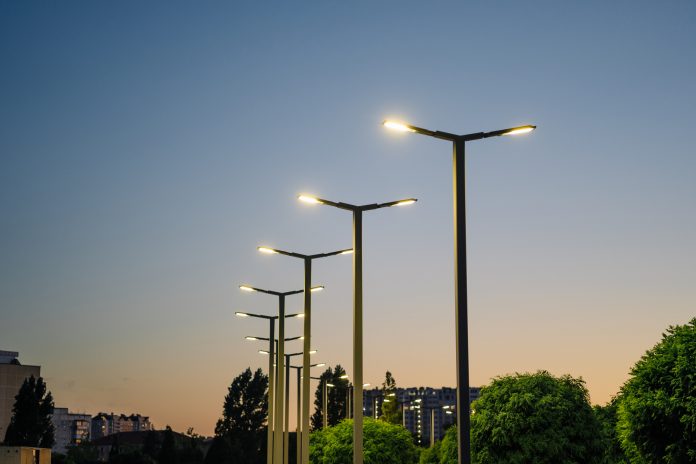Switching to LED street lights could help to combat the climate emergency and decrease energy consumption
Street and public lighting constitutes a vital service offered by both national and local governments. Effective and well-functioning street lighting services are necessary for ensuring road safety, personal security, and the overall urban environment.
In today’s world, there is an increasing need for energy while the availability of energy resources is decreasing. Consequently, product manufacturers and designers actively explore sustainable alternatives to address this challenge. These alternatives are designed to conserve energy by predominantly utilising renewable energy sources.
CO2 Emission Reduction
The street lighting sector is also transforming, with numerous manufacturers introducing cutting-edge solar-powered street lights, and designers are innovating improved lighting solutions for the future. In line with this eco-friendly trend, 20 sustainable street lighting systems are capable of enhancing environmental sustainability and street safety.
Globally, numerous sizeable and compact urban areas and local authorities have adopted light-emitting diodes (LEDs), often called solid-state lighting (SSL), for their street and public lighting needs.
Switching to LED lighting
The North and West Northamptonshire Councils have officially recognised the climate emergency and are actively implementing measures to decrease energy consumption.
In the coming two and a half years, Balfour Beatty Living Places will replace the existing lights with LED technology. This transition is anticipated to result in a substantial annual reduction of approximately 1,091 tonnes of CO2 emissions in the county.
Moreover, introducing these new LED lights will yield various supplementary advantages, such as providing white light, which is associated with enhancing community safety, reducing light pollution, and improving energy efficiency.
Efficient Replacement Process
As part of their routine maintenance activities, Balfour Beatty will facilitate the replacement of the existing lights with LED technology, resulting in a reduction of approximately 1,091 tonnes of CO2 emissions annually in the county.
Additionally, the forthcoming LED lights will offer a spectrum of added advantages, encompassing the provision of white light associated with enhancing community safety, decreasing light pollution, and enhancing energy efficiency. This approach ensures a more efficient and streamlined process.
Urban areas and local authorities that have embraced LED technology have noted decreased maintenance expenditures, partly attributed to the extended lifespan of LEDs and enhanced luminaire specifications incorporated in their procurement practices.











